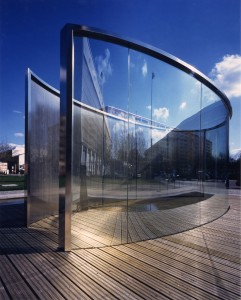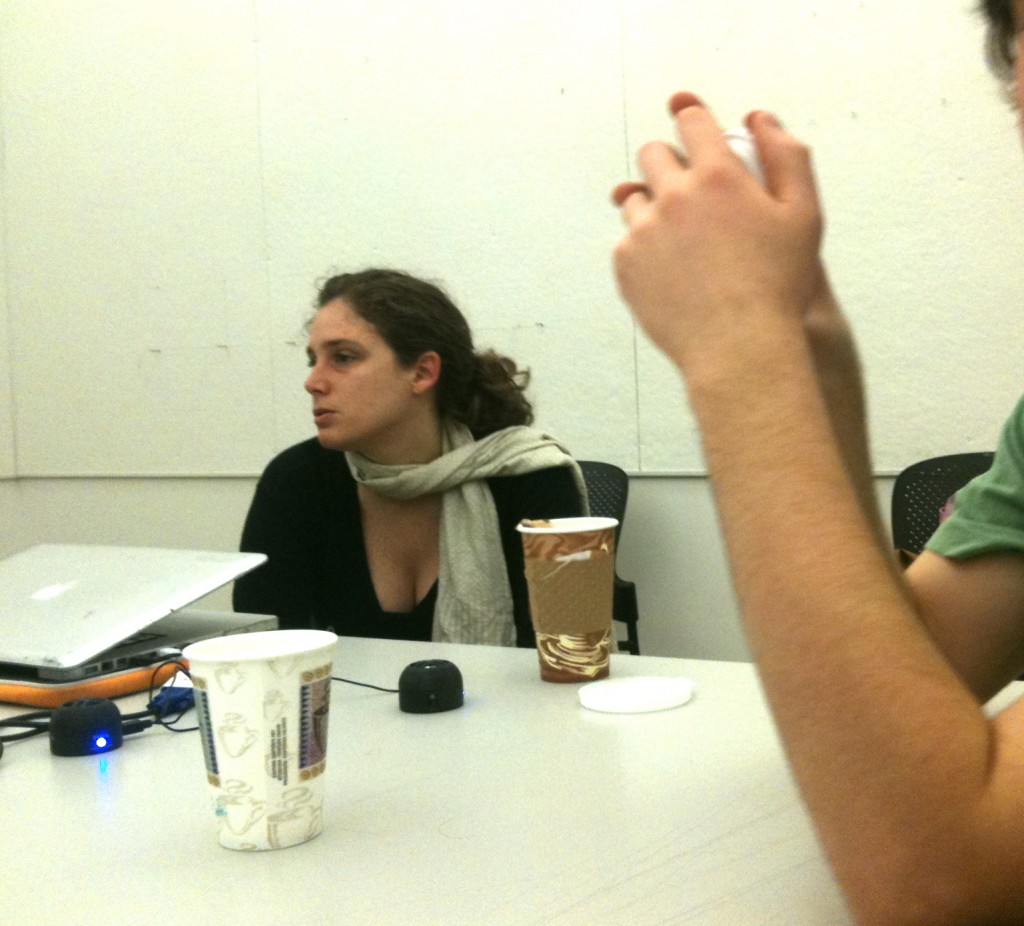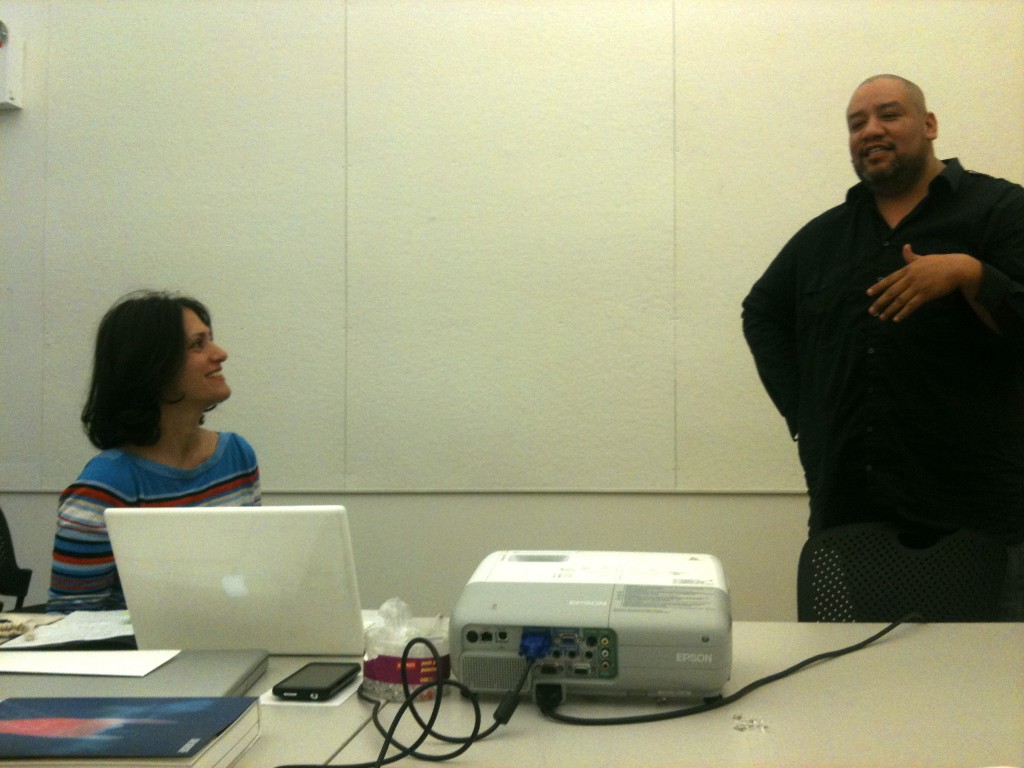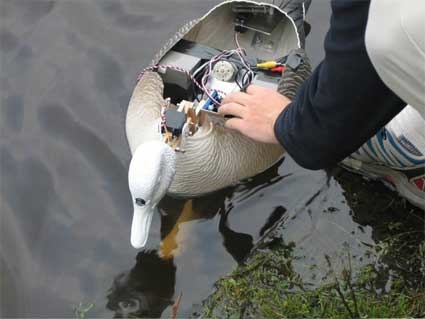Less than one month following my previous post, art students have enjoyed a whole “nother” slew of guest speakers. Even with the end of the semester, crits, and final projects in clear sight, our teachers have not failed to bombard us with the best.
 April 4, Art Fabricator Ted Lawson visits David Schafer’s Professional Practice class
April 4, Art Fabricator Ted Lawson visits David Schafer’s Professional Practice class
With a degree in sculpture, a knack for structural invention, and having worked as an assistant to Jeff Koons for several years at the beginning of his career, Ted was certainly an informative character. He explained to us the mission of his New York-based art fabrication business (Prototype New York, LLC), the experiences that led him there, and some interesting input on the art world in general. Highlights:
Ted warned us that, pursuing a career as an artist, we would have to “look out for only two things. One, running out of money, and Two, not taking risks… you know a lot of artists kill themselves. Probably because they feel empty and meaningless when they realize that they’re stuck in their market no longer making anything transformative.” But don’t be deceived, Ted’s talk was upbeat and enjoyable; he spent the rest of his time describing some highly complicated structural works he has produced recently, including the photo above of a hollow sculpture by Ghada Amer.
 April 7, Eduardo Vivanco speaks to Masha Panteleyeva’s Art History Class
April 7, Eduardo Vivanco speaks to Masha Panteleyeva’s Art History Class
A colleague of Masha’s, Eduardo spoke to us about the theoretical relationships between two important conceptual artists we have all come to know and love: Dan Graham and James Turrell. He spoke about the many ways drawing and architecture meet and inform each other—the ways in which drawing is important to both the cannons of the fine arts and architecture, as certain ideas can only exist in that imaginative medium. His talk evolved into a critique of the museum institution and its structure, and was very informative at the following week’s trip to Dia: Beacon.
 April 11, Artist Fawn Kreiger gives talk to John Jurayj’s Art Studio
April 11, Artist Fawn Kreiger gives talk to John Jurayj’s Art Studio
While John Jurayj was busy changing his newborn’s diapers and basking in the bliss of fatherhood, artist Fawn Kriger gave an intimate talk about her work and influences. Working part time at the Keith Haring “Pop Shop” down town, while nurturing her own practice in the arts all around the country, Krieger was able to provide a good deal of insight on the art world and its dealings: AKA how to survive. After her lecture, she offered us individual critiques as preparation for our final studio project.
 April 11, two Intellectual Property Rights lawyers speak to David Schafer’s Professional Practice class
April 11, two Intellectual Property Rights lawyers speak to David Schafer’s Professional Practice class
Lawyers Gregory and Don sparked the most engaging discussion of the semester, many students have said. With unyielding high energy, these two explained to us many contemporary issues at the heart of intellectual property rights—loosely defined and forever open to interpretation. They presented several controversial court cases (eg. Sheppard Fairey’s Obama poster, and Richard Prince’s very recent adaptation of French photographer Patrick Cariou’s work), and encouraged us to define whether plagiarism is valid either here or there, and if so… why? They explained how and why different appropriation artists might reject these discursive ideas of “right and wrong,” and their repercussions (both good and bad) that have echoed throughout the art world.
 April 15, Curator Regine Basha speaks to Jeff Gibson’s Art Theory class
April 15, Curator Regine Basha speaks to Jeff Gibson’s Art Theory class
Regine Basha presented an overview of her career (a map of which is available at Bashaprojects.com) and life, and the ways these two inform each other, to Jeff’s theory class. Her work (a body of massive curatorial feats) seeks to redefine certain notions of the curator’s role in the art world, as she explained through a recap of several of her recent projects. Highlight: “An Exchange with Sol Lewitt,” a gallery exhibition that invited submissions from anyone and everyone, as a nod to the exceedingly generous nature of the late great Sol Lewitt—“a democratic idea about art as a form of communication in a one-on-one way is what Sol Lewitt means to me, and how I want my projects to read.”
 April 22, Artist Rune Olsen speaks to Jeff Gibson’s Art Theory class
April 22, Artist Rune Olsen speaks to Jeff Gibson’s Art Theory class
“My work comes across as extraordinarily sexual—about bestiality and all that bad stuff. But I don’t think it’s about that. It’s about me.”
Rune’s work at first glance seems to operate on shock value—animals with some distinct humanness about them having violent, often unnatural sex. After his artist talk, his work is seen by Jeff’s theory class in a whole new light, as he brought up numerous interesting points of discussion. Rune himself is a soft-spoken, articulate, Norwegian artist working in New York, who uses sculpture as a means to investigate and reflect on his personal history. E.g. “By watching movies, I had experienced NYC before I arrived here from Norway, before I had moved here for real. And once I got here I kept having these weird flashbacks to experiences I had already had. But they weren’t real at all.” Other highlights, “I am always interested in relationships, two things fighting, two things having a relationship together [referencing a slide of one of his sculptures: a rooster mounting a rabbit]….my work comes from nihilism, death, and darkness; there is a huge amount of humor in it!” Or, “Where I grew up, they said that being gay is not natural because it doesn’t exist in nature, but then they told me that what separates man from animals is consciousness, which I thought was strange. Even on that small religious island, they must have known that animals too act consciously…. Wolves do kiss, they stick their tongues into each others mouths and play around in each others mouths… a lot of what we do animals do too, which makes me feel small and insignificant in the world, and ironically empowered….” And, the Art Theory class quote to win over all others, “art theory isn’t necessarily the best or even the most interesting theory at all.”
 April 28, Artist Natalie Jeremijenko speaks to Masha Panteleyeva’s Art History class
April 28, Artist Natalie Jeremijenko speaks to Masha Panteleyeva’s Art History class
Natalie’s vast body of work combines the ideas of modern technological engineering, environmental consciousness, public intervention, personal agency, and contemporary art theory. Having designed objects like more attractive solar panels for the façade of one’s home (or breathable bags for fire escape gardens, or dust masks that indicate levels of pollution, or buoys that indicate aquatic pollution and fish activity, or her entire “environmental health clinic”) Jeremijenko continuously comments on the climate (pun intended) of our society and our non-agency in affecting the suffering environment. Her talk compliments the coming conclusion of Masha’s lectures on the city and our relationship to it.
